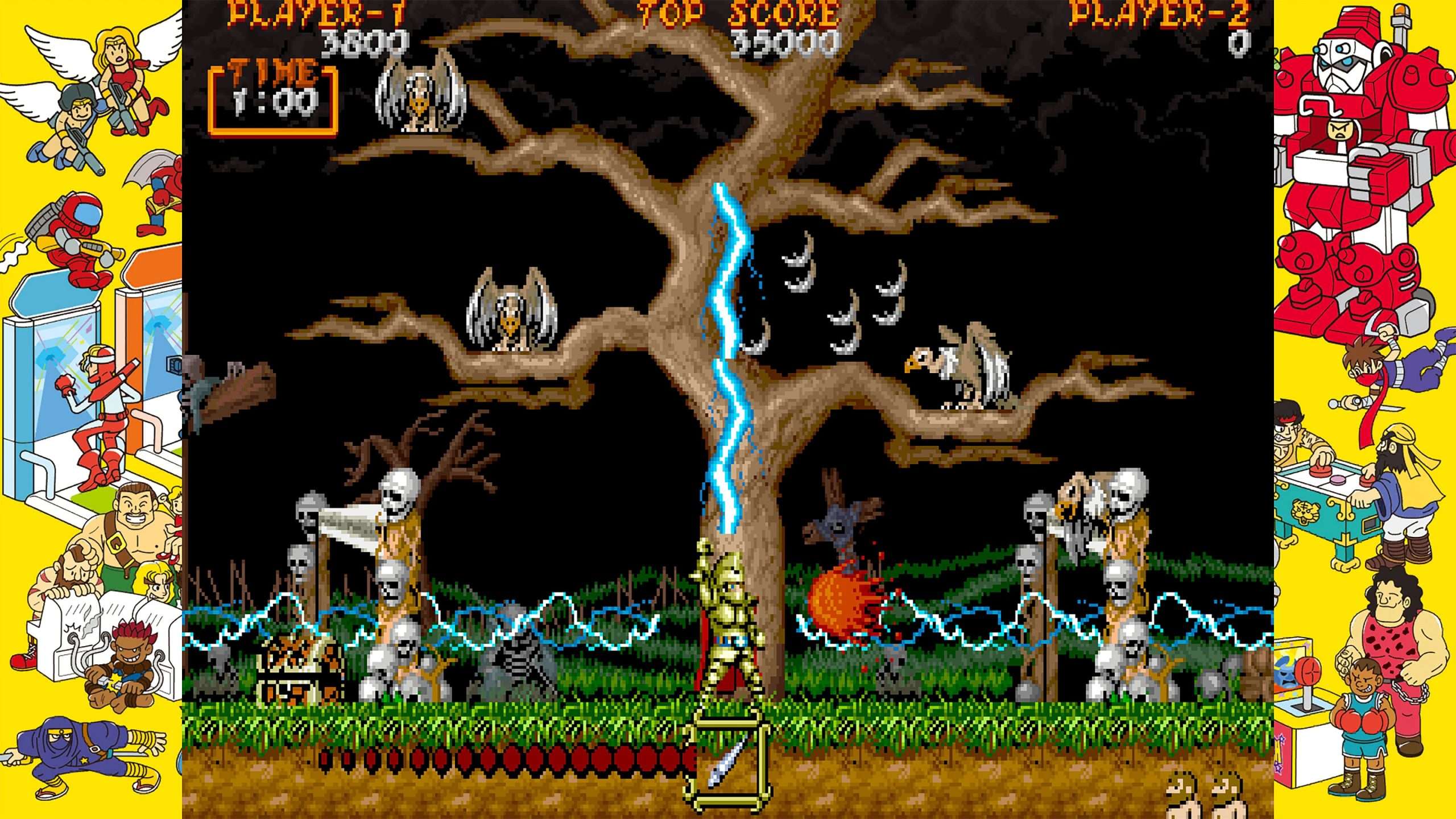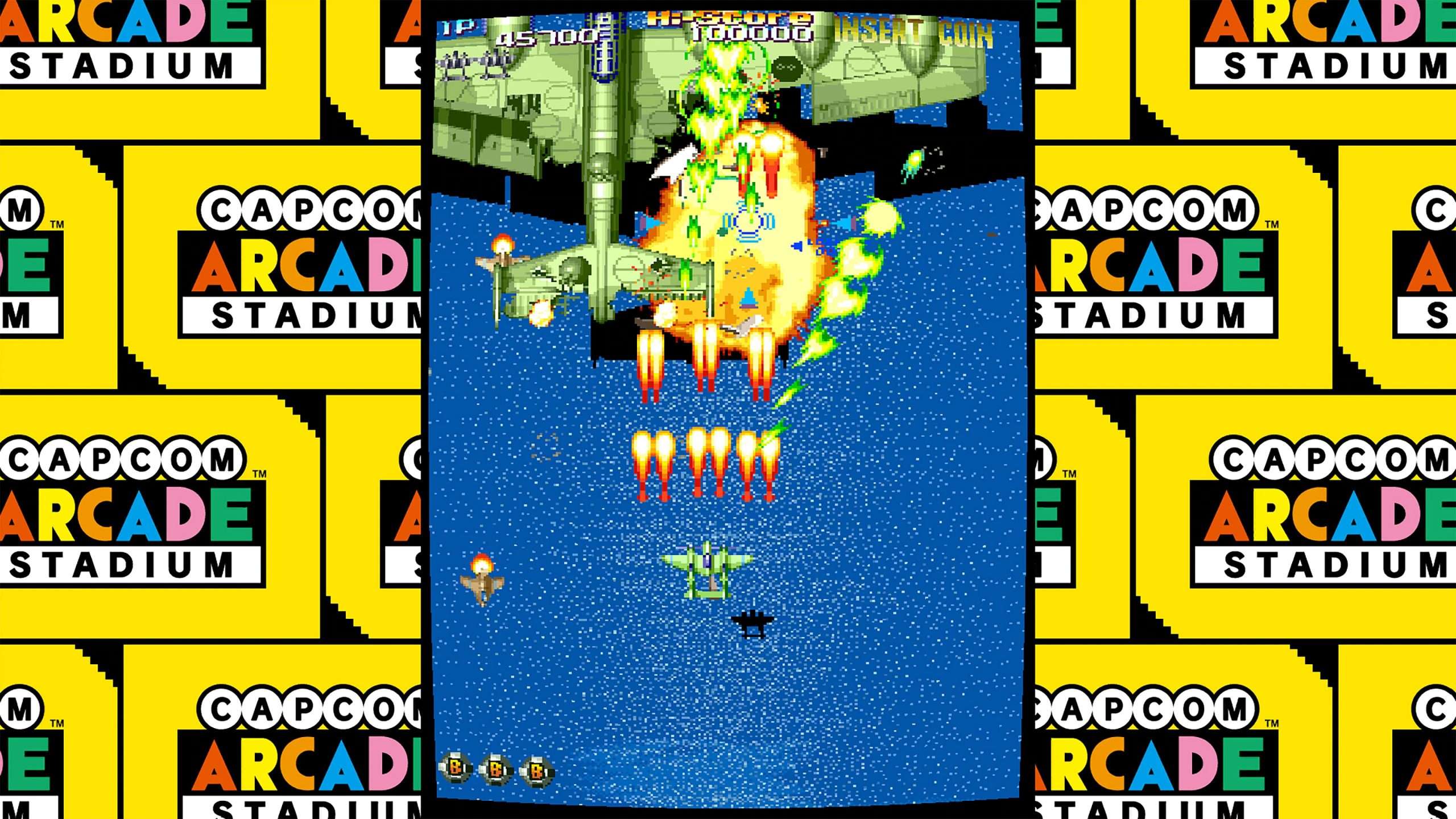
Capcom Arcade Stadium PS4 Review
Ahh, arcades, unless you live in a country like Japan, for the rest of us it seems arcades are a thing of the past. There was a wonderful sense of discovery when walking into an arcade as a child in the UK and seeing all the video games that were yet to be playable at home. I had that same feeling when I went to Japan in 2018, discovering so many exclusive games that I had not seen before.
As video game fans, we all want to preserve the history of games, finding ways to play old games on our current systems, but there is quite a history of arcade games that never got ported to consoles. This means that often the only way to play these is to go into the grey market of emulation and grab the arcade ROMs. Titles like Scud Racer, H2Overdrive, Alien vs. Predator, Mario Kart Arcade GP, Daytona USA 2: Battle on the Edge, and many others have not seen the light of day as a home release.

Capcom Arcade Stadium is a step in the right direction for arcade collections. While a lot of the games in this collection have been on consoles before, there are a few that finally get their first home release. The hope is other companies see this as a good idea and follow up with other many arcade classics, such as Sega. Anyway, that is another story – today this is all about Capcom Arcade Stadium and the work that Capcom has put into it to bring a nice collection of arcade games in one neat package. You can even use your fight stick with it for a true arcade experience.
It is clear that this is more of an application storefront for Capcom to keep building upon since currently on the PSN store the title is free to download. Grabbing the title gives the user access to one free game, 1943 – The Battle of Midway, the sequel to 1942. This is just a teaser to get you into the ecosystem of purchasing the rest of the 31 games that are available. These are split into three categories for a specific time period – 1984 to 1988, 1989 to 1992, and 1992 to 2001 – with each pack coming in at £11.99, or you can get them all for £32.99.
Each pack comes with 10 games, with Ghosts ‘n Goblins coming in as a separate download for £1.69. This sounds like the direction Capcom will go with future additions to increase the library, and if they are around that price as individual games, then it seems respectable. I guess it depends on how popular this arcade collection becomes, but it would be nice to see more games added over time as Capcom has a rich arcade history. There are already games not featured here that should be, which I will get onto later.
Currently the games fit into one of three categories – Shooting, Action, Fighting. Each pack covers these genres and an era of Capcom. 1984 to 1988 is, as probably expected, called “Dawn of the Arcade”. This pack features Vulgus (1984), Pirate Ship Higemaru (1984), 1942 (1984), Commando (1985), Section Z (1985), Trojan (1986), Legendary Wings (1986), Bionic Commando (1987), Forgotten Worlds (1988) and Ghouls ‘n Ghosts (1988). 1989 to 1992 is the “Arcade Revolution”. In here you can find Strider (1989), Dynasty Wars (1989), Final Fight (1989), 1941: Counter Attack (1990), Mercs (1990), Mega Twins (1990), Carrier Air Wing (1990), Street Fighter II (1991), Captain Commando (1991), Varth: Operation Thunderstorm (1992).
Lastly, the period with the largest amount of years covered, 1992-2001, is the “Arcade Evolution” and in here included are Warriors of Fate (1992), Street Fighter II Turbo: Hyper Fighting (1992), Super Street Fighter II Turbo (1994), Armored Warriors (1994), Cyberbots: Full Metal Madness (1995), 19XX: The War Against Destiny (1995), Battle Circuit (1997), Giga Wing (1999), 1944: The Loop Master (2000), Progear (2001). Most of these games have seen console releases before, but Carrier Air Wing, Progear, 1944: The Loop Master, and 19XX: The War Against Destiny make their debut from arcade to your home. With three of these in the Arcade Evolution pack, it makes that pack more enticing to experience than the others.
I will not even attempt to review each game – there are too many for such a standard review – but I will mention that some of my favourites in the bunch. Final Fight is obviously a classic, and following in the steps of beat ’em ups, Battle Circuit (a beat ’em up where you can play as a girl who rides a pink ostrich, who does not want to do that while beating on some thugs?) is a blast as well, with additional moves that can be bought after each stage to increase the attack options. Progrear, a bullet hell shooter from the masters at CAVE, is simply madness incarnated as fun, but rather short, sadly, but it shows the craziness that could be performed with the arcade boards, sprites overwhelming the screen in colourful galore. It is certainly a highlight of the collection for me.

No matter how many games were going to be initially included, some people would have ideas of what should have been there. Back in 2019, Capcom released the Capcom Home Arcade, an arcade stick console that came with 16 games. This featured games that are not yet in Capcom Arcade Stadium, such as the fantastic Alien vs. Predator, Capcom Sports Club, Darkstalkers: The Night Warriors, Eco Fighters, Super Puzzle Fighter II Turbo and Mega Man: The Power Battle. These will probably come at some point in the future since you would expect them to be ported over from the Home Arcade device. A couple of other ones I would like to see in the future are The Punisher beat ’em up, and Red Earth, a fantasy fighting game. People should share their love for Capcom’s arcade catalogue to their social accounts, because it sounds like they are listening. What is currently here has been treated well with good emulation and brilliant additional features, so why not get more included.
Emulation by developers to get their old games on newer hardware has been all over the scale throughout history – some do it well, but some do it poorly, which in turn hinders performance or ends up causing other issues. Thankfully with this collection, the emulation is great. Details from the credits say that this has been built in the RE Engine, but there are also mentions of MAME (Multiple Arcade Machine Emulator). MAME is a popular, freely available, open-source emulator that aims to emulator arcade games and has been on PC for many years. It is the go-to emulator for old arcade games. It makes sense that Capcom would make use of this if it works so well rather than having to spend time to make up their own emulator from scratch. What this means for the end-user is that the games run great. Now I am not an arcade specialist, so I would not be able to say if these are arcade-perfect, but the performance is fast and responsive and the only slowdown to appear are what happens in the original game, so not really a negative if performance is the same as in the arcade.
Running through emulation does come with added benefits that help improve the user experience. There are the standard presentational visuals, such as different filters (smoothing, scan lines, etc.) and screen sizes, and there is the ability to play it within an arcade cabinet, which is a neat inclusion, especially with the various cabinet styles to fit around the screen. In the end, I preferred the source coming directly to the screen for the game to get it as big as possible without distorting the image. Most games can be switched between their English or Japanese version, and lastly, each of the games have their own options to adjust the difficulty, starting lives and point requirements to gain new lives.
The biggest addition to the emulation is the new funky features that would not be possible on the original arcade cabinet. A press of the right shoulder buttons will instantly rewind the game, so if you fall down a hole in Strider or get smashed in the face with a Dhalsim extended hand in Street Fighter II, just hit this button and rewind time a little to retry the same situation again. The left shoulder button adjusts the speed of the game, allowing either to increase or decrease the gameplay, making it super handy for games that require good dodging skills, since decreasing the speed gives more time to react to elements on the screen. There is also the ability to save and load whenever. Even though arcade games are often short in experience, an hour or less on average, sometimes something comes up and so the ability to stop and save without having to restart the whole arcade game from scratch is great for someone playing on a break.
Every game in Capcom Arcade Stadium has online leaderboards in either a timed or score challenge, which in its own right would be good enough, but Capcom has included weekly challenges between the various games that adjust the limits of the game to offer a unique leaderboard. This could be having to play the game at maximum speed, maximum difficulty, upside-down, one life only, no bombs (for shoot ’em ups), or Endless Mode, in which the game keeps going until the game over is hit. This is a brilliant way to keep people returning to playing the games with unique twists, as unless you are a die-hard fan, I can see some gamers only playing these games a couple of times, finishing them by pumping in loads of virtual coins to brute force through the game, then move onto another title.
One slight issue I do have with the collection is that even though every game retains the local multiplayer options that the arcades had, there is no option to play the games online, which means sadly it’s close friends only. It is not the end of the world, but it would have been nice to play a few of these with my online buddies. I am not sure how hard that would have been, but the fact that the emulator used in this software is MAME, it has the power to play the ROMs online, so it could have been done here. Missing this is that final cherry topping on top of a tasty cake after all the effort that Capcom went into the rest of the new features added in.

Capcom Arcade Stadium is a great way to look through the history of some of Capcom’s arcade titles, and boy does it reveal how much some of these games were coin eaters! Jokes aside, this collection is a lovely way to revisit your nostalgia. The work put in by Capcom to spice up the front end, so it looks like a professionally brought-together collection of games, is wonderful. Emulation is solid across the board. The added features, such as rewind, are a smart inclusion, and giving players all the leaderboards to challenge the world with each game or during the weekly challenges gives the serious players more reason to keep returning. There are a few classics missing here, and more genres could be represented, but hopefully, they come in the future. On the flip side, there are games here having their first console release. This is a solid release of arcade games that have been given love and care. That is all one asks for when bringing old games to the new consoles – to be represented in the best possible way.
